- Introduction
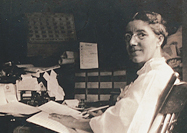
- The Author’s Life
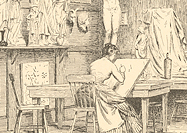
- The Woman Question
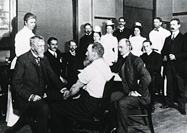
- A Terrifying Tale
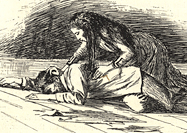
- Reading “The Yellow Wall-Paper”

- The Author's Legacy
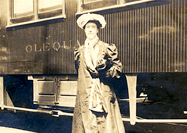
EXPLORE
Select one of the topics from above.
Introduction
In the late 19th century, at a time when women were challenging traditional ideas about gender that excluded them from political and intellectual life, medical and scientific experts drew on notions of female weakness to justify inequality between the sexes. Artist and writer Charlotte Perkins Gilman, who was discouraged from pursuing a career to preserve her health, rejected these ideas in a terrifying short story titled “The Yellow Wall-Paper.” The famous tale served as an indictment of the medical profession and the social conventions restricting women’s professional and creative opportunities.
Continue to Introduction
The Author’s Life
Founded a year before Charlotte enrolled, the Rhode Island School of Design offered a place for her to hone her creativity. Women played a prominent role at the school. Many of the founders, leaders, and financial supporters were women.
Continue to The Author’s Life
The Woman Question
After a month of treatment by Mitchell, Charlotte was sent home to continue the regimen of rest. Far from getting better, she became increasingly distressed and began to fear that the method was bad for her health. She decided to end the rest cure and her marriage.
Continue to The Woman Question
A Terrifying Tale
The story ends with the narrator’s husband discovering his wife maniacally circling the bedroom, surrounded by the tattered shreds of paper she has torn from the walls. He faints at the sight.
Continue to A Terrifying Tale
Reading “The Yellow Wall-Paper”
Scudder rejected the piece outright. Instead, “The Yellow Wall-Paper” was published more than a year after it was written, in The New England Magazine, in January 1892. Readers were intrigued and disturbed.
Continue to Reading “The Yellow Wall-Paper”
The Author's Legacy
While some 19th-century readers did appreciate the message hidden in “The Yellow Wall-Paper,” the story also resonated with many in the women’s movement of the 1970s. Since their rediscovery of the tale, the text has been republished many times, continuing to enthrall audiences more than a century after it was written.
Charlotte left a vast legacy of influential writings. In addition to being an important feminist thinker, she was a eugenicist, presenting her views on women and society alongside racist, xenophobic, and ableist ideas in many of her works. Her accomplishments in the sphere of women's rights overshadowed her harmful beliefs until the 21st century. Learn more about eugenics here. Continue to The Author's Legacy

